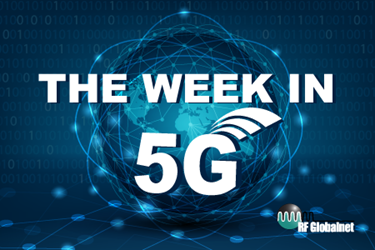The Week in 5G: 9/9/21 — AT&T At Odds With Alarm Industry, Wants Mid-Band Spectrum Auction Screen

By Abby Proch, former editor

AT&T is fighting a request from the alarm industry to delay the sunsetting of its 3G data services. AT&T says the delay from February to December 2022 would waste valuable resources and degrade performance as it continues its 5G rollout.
In May, the Alarm Industry Communications Committee (AICC) raised, well, the alarm on AT&T’s plan to terminate 3G data services, saying its members are not ready. AICC argued that the COVID-19 pandemic delayed the companies’ replacement of 3G alarm signaling radios. AICC said peoples’ hesitance to let strangers into their homes delayed updates and replacements for 14 months. AICC also said the ongoing microchip shortage bogged down efforts.
But AT&T isn’t buying it. In a response filed with the FCC on Aug. 30, AT&T argued that alarm execs had touted a return to normalcy after a “two-month blip” during the pandemic and decried any widespread impact of a chip shortage in recent investor calls. AT&T added that alarm companies issued similar warnings prior to the 2G to 3G transition but fared just fine.
In a separate filing with the FCC, AT&T pleaded its case for limitations on how much mid-band spectrum a single entity can hold. In a company blog post, AT&T VP for Federal Regulatory Relationships Joan Marsh argued for the implementation of a mid-band spectrum acquisition screen that could potentially stop a single bidder from acquiring more than one-third of “relevant frequencies in a given market,” which she said could result in “competitive harm.” Spectrum screens already exist for low- and high-band spectrum for the same reason.
AT&T’s request comes as it battles competitors T-Mobile and Verizon for space in the mid-band spectrum where all are grappling for space to deploy their 5G network. T-Mobile assumed a large chunk Sprint’s spectrum licenses when it merged with the company in 2020. In a February C-band auction, Verizon had the highest total gross winning bid of $45.4 billion in licensures, followed by AT&T with $23.4 billion and T-Mobile with $9.3 billion, according to the FCC.
In network rollout news, China claims to have deployed nearly 1 million 5G base stations. According to a report by Global Times, the Chinese Foreign Ministry says the country now has 993,000 base stations. Ministry spokesperson Wang Wenbin reportedly provided the update in his introduction at the 2021 World 5G Convention in Beijing.
Wenbin also seized the moment to encourage international cooperation with China in developing 5G communications and called for “joint resistance to disturbance and damage of 5G international cooperation.” In May 2019, the U.S. grew skeptical of Chinese tech firms’ intentions and placed some on an entity list that bans U.S. players from engaging with them (e.g., Huawei) due to national security risks.
In automotive news, TELUS, one of Canada’s leading telecoms, will provide General Motors (GM) Canada’s next-generation vehicles with 5G networking beginning with model year 2025, according to a GM Canada press release. This is the first time a domestic communications company has been tapped for connectivity services in Canada, says the release.
5G enablement means faster music and video downloads, software updates, and navigation, mapping and voice services. Buick, Cadillac, Chevrolet and GMC model years 2019 and newer will also see improved speeds to their 4G LTE services thanks to the updated network. In August, GM made a similar deal with AT&T to outfit vehicles in the U.S. with 5G network access starting in model year 2024.
Also in automotive news, Porsche has partnered with Vodafone to provide a 5G standalone network at its Weissach Development Centre in Germany, according to a Porsche press release. Porsche will leverage 5G to securely transmit data between cars, computers and people in real time, as well as support the development of new vehicle systems and functions. While some 5G still relies on existing LTE infrastructure, this standalone solution operates in the 3.5 GHz range, which only produces a 10-millisecond delay, or latency, for data exchange, says the release.
Finally, Qualcomm and Ericsson claim to have completed an over-the-air call using 5G New Radio (NR) on the Citizens Broadband Radio Service (CBRS). The field trial used a Snapdragon 888-powered test device and a Snapdragon X60 5G modem via Ericsson’s Distributed Innovation Network, according to a report by Digital Trends. 5G mobile networks can operate on CBRS band without a spectrum license from the FCC. Representatives from both companies are calling the trial run another step closer to 5G rollout in the U.S.
